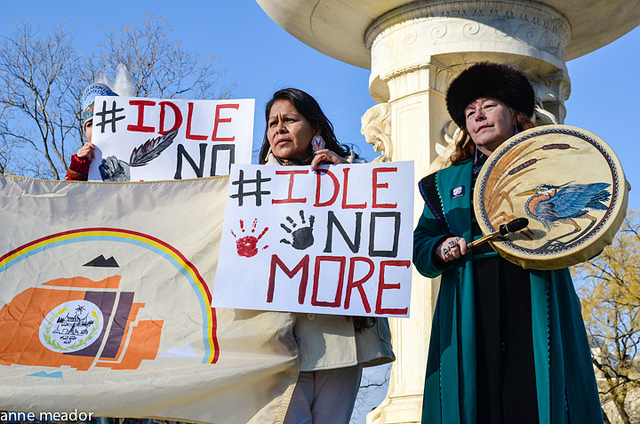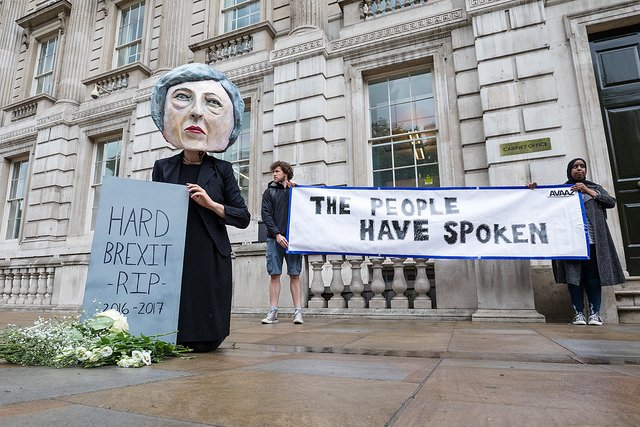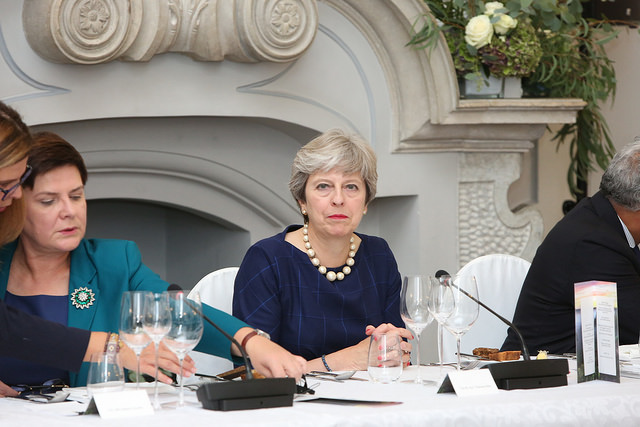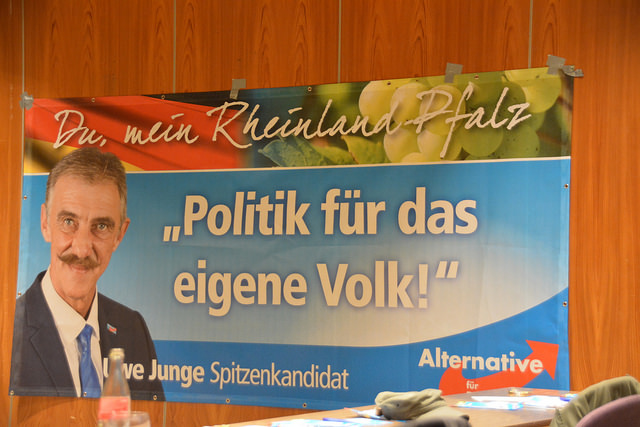Idle No More is back. After a lull, the movement has been reinvigorated by a march at a shale gas field in Rexton, New Brunswick last week that turned violent. Now that discussions of the group are once again making headlines, it’s a perfect time to discuss what led to the movement’s creation, as well as how it functions within the broader context of Canadian multiculturalism.
Idle No More began as a protest against a piece of legislation called Bill C-45. C-45 (which eventually became known as the Jobs and Growth Act) was an omnibus budget bill that changed the legislation contained in 64 acts or regulations, loosening constrictions on the free-market. First Nations groups were particularly concerned with how the bill affected key provisions in the Indian Act, Navigable Waters Protection Act, and the Environmental Assessment Act.
These changes were mainly implemented to facilitate resource extraction, particularly in the construction of pipelines leading to and from the Athabasca oil sands, and are part of a larger push by Prime Minister Stephen Harper and the Conservative Party to transform Canada into a laissez-faire North American petrol-state.
But Idle No More’s roots run deeper. Many Aboriginal communities were bitterly offended by the fact that the Canadian government did not seek First Nations approval before making sweeping changes to legislation that directly affects their lives. For instance, C-45 successfully lifted protections for many lakes and rivers that are still in use by Aboriginal Canadians. The sudden vulnerability of those waterways brought to light much deeper anger with Ottawa that is rooted in how Canadian central authorities relate to Aboriginal groups.
We should therefore be careful in assuming that the real target is C-45 itself. The source of anger is the Canadian government’s behavior in facilitating massive changes in the lives of First Nations populations without even consulting them. It was an action that carried a familiar tone of arrogance.
And for many Aboriginals, it is that same arrogance that has always tainted relations between Canada, the European settler-colonial project, and the indigenous peoples that stood in its way. C-45 was simply a reminder of how those existing tensions have become manifest in the Harper government.
As a result, C-45 led to the birth of a new protest movement. Its target: an increasingly technocratic central government in Ottawa, which privileges its established links with Canada’s energy sector over the well-being of the country’s Aboriginal populations.

This isn’t the first time that a seemingly minor governmental push has led to tensions between First Nations peoples against the Canadian government. The most obvious example is the showdown that ensued during 1989’s Oka Crisis. When the mayor of Oka, Quebec, made an announcement that a private golf club would expand over a parcel of pine forest, the local Mohawk community was outraged. Mohawk claims to their ancestral land were rejected three years earlier, and no reviews were undertaken of its environmental and historic value.
As a result, members of the Mohawk community erected a barricade blocking access to the land. On July 11th, a police emergency response team attacked it before being pushed back after a 15-minute gun battle. News spread across Canada and the United States, which led to large shows of support, with Aboriginals from both countries joining the Mohawk occupation. The crisis would last 78 days, and ended on August 29th. The events galvanized an institutional push to develop new means of policing First Nations groups in order to prevent future events. And although the mayor of Oka was later reelected, his plans for an expanded golf course were cancelled.
But, of course, this wasn’t actually about golf. The reason that the crisis ensued, and was so heavily supported, is because the mayor’s golf course initiative occurred during a period of severe tension regarding land use in communities bordering reservations. The Oka Mohawk were simply the first to take matters into their own hands and directly confront developers. Matters would explode several more times in Canada over the next decade, such as during the Ipperwash Crisis, and the Grand River dispute in Caledonia.
These mobilizations, which differ from Idle No More in their use of violence, grew as a result of frustration with bureaucratic unfairness, which carries particularly traumatic overtones in indigenous circles. This hasn’t changed, and will likely continue to be seen in ongoing debates between First Nations communities and the federal government. They will probably also impact discussions of power and hierarchy within First Nations communities themselves.
And as mobilizations continue, whether through Idle No More, or its political descendants, it is important to ask what the responsibility of non-Aboriginal Canadians are, in solidarity with the overall movement. The answer is about being supportive of First Nations claims during prolonged fights about government spending, and also in pushing the concept of multiculturalism to be more substantive, and inclusive of indigenous communities.

Canadians must recognize our own responsibility in protecting social programs that benefit Aboriginals, and are currently under attack. For instance, the shutdown of the Kamitavik volunteer program, which placed non-Aboriginal Canadians in reservations, was a perfect opportunity for protest. Although that program was dismantled, similar legislation that cuts programs which benefit First Nation groups is being introduced. But more broadly, we have a responsibility to rewrite the social contract between Canada and its First Nations peoples.
I was born in Saskatoon, Saskatchewan, but only started living there when I was seven years old. I grew up in middle-class areas of the city’s lower-east side between the 1990s and early 2000s. It was a lesson in Canadian privilege, as I remember being taught that Saskatoon’s west side was some sort of notorious hinterland for us, “because of the Natives.” (And I say this as a child of Pakistani immigrant parents. The distinction is important.)
Urban centers in the Canadian prairies have large populations of First Nations peoples that many of us have never had to directly encounter. They were successfully kept away from us. The racism that was used to maintain and propagate their segregation was usually justified by the effects of earlier forms of this same discrimination: anti-social behavior, thievery, alcohol abuse, etc. Poverty is its own self-fulfilling prophecy.
First Nations peoples have average incomes far below those of other Canadians. Half of Aboriginal Canadian children nationwide live in poverty, which is triple the national average, rising to 62 percent in Saskatchewan. This has had devastating, long term effects on First Nations communities. For instance, it’s one of the main reasons for a massive education gap between Aboriginals, and Canadians of immigrant descent. Only 41 percent of First Nations children graduate from high school, compared with 77 percent of the wider population.
Immigrants, including second-generation ones such as myself, constantly rank among the proudest Canadians. This is because we feel so welcome, owing to a strong national culture that celebrates multiculturalism. Canadians love their diversity so much that they also enjoy bragging about it. Indeed, multiculturalism has become such a mark of pride that it makes us feel superior. It’s a bizarre form of exceptionalism, that suspends Canada from reality in its own way.

This sense of superiority has resulted in many Canadians having an unbearable tendency to pretend that social conflicts only exist abroad. As a result, we speak to Europeans with condescension when we discuss their tensions with Muslim populations. And we speak to Americans with condescension when we discuss the continued problem of anti-black racism in national politics. We make little room for our own situation, which is that Canada not only has its own problems with these same minorities, but also continues to treat its indigenous populations so terribly that James Anaya, the UN special rapporteur on the rights of indigenous people, recently said that Canada is facing a “crisis.”
Multiculturalism is more than just an attitude made manifest in Canadian policy. It is a crucial necessity of Canadian life, which is a constant battle to uphold, and apply equally, across society. For indigenous Canadians, it’s only successfully maintained through a mixture of rectifying past injustices, such as sexual abuse in Indian residential schools, and confronting new issues, including C-45. Multiculturalism contains a duty to productive social change where it’s necessary to preserve core principles of fairness, and comfort, for all Canadians. Despite all our talk about loving diversity, we’re clearly losing that battle if we think that supporting immigration and celebrating settler diversity means an absence of discrimination that justifies inaction.
While I was still living in Saskatoon, I heard about the Neil Stonechild inquiry. I remember seeing on the news that the city police had somehow caused a Cree Canadian First Nations teenager to freeze to death. It turns out that Stonechild was a victim of a practice known as starlight cruises, which targeted Saskatoon’s Aboriginal residents. The “cruises” consisted of police officers driving them to the edge of town in the dead of night, throwing them out, and forcing them to walk home in frigid temperatures. Neil Stonechild was just one of many deaths.
Multiculturalism is a responsibility. If we as Canadians can trace ourselves to a country where Aboriginal teenagers die from hypothermia as a result of police harassment, then we’re failing in that responsibility. And we must endeavor to do better.
Photographs courtesy of cool revolution, jonathonreed, and Daniela Kantorova. Published under a Creative Commons License.





